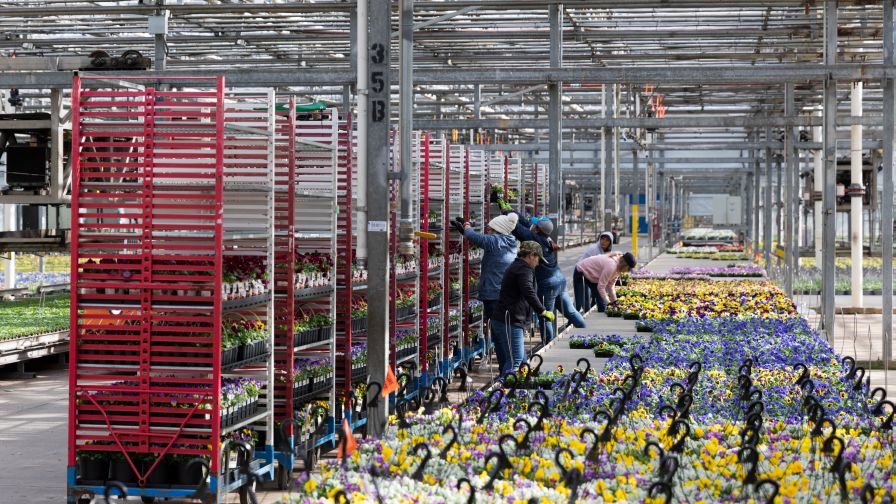Economy Poised For Glacially-Paced Recovery
Optimism about the apparent ending of the recession has been tempered by the reality of substantial further deterioration in employment conditions and ongoing struggles with state and local government budgets. Real GDP is expected to rise slightly during the third quarter, as inventory liquidations slow dramatically and consumer spending is revived.
The end of the recession, however, does not mark the end of the economy’s troubles. Economic activity will likely remain somewhat subdued well into 2010, and the unemployment rate will likely rise through the middle of next year, topping out at around 10.5 percent.
On the upside, there is a great deal of stimulus in the pipeline, including the $787 billion economic recovery act, low interest rates, the completion of a colossal drawdown in inventories and the prospect of falling gasoline prices. On the downside, employment losses remain massive and the unemployment rate continues to increase, albeit at a much slower rate. Moreover, hours worked and earnings are down even more than employment, which is leading to incredibly sluggish wage growth.
Household wealth has also taken a huge hit and many state and local governments are grappling with huge budget shortfalls. The net result is likely a very sluggish recovery, with real GDP growth not returning to a strong enough pace to reduce the unemployment rate until the second half of 2010. With growth remaining subdued, inflation should continue to moderate well into next year, allowing the Fed to remain on hold through the middle of next year.
Good Economic Signs
As we look at the remainder of 2009, the economic pluses outweigh the minuses. Consumers are now showing a willingness to spend, despite high debt levels and rising foreclosure rates. Their long-term history suggests they’ll keep it up. Consumer confidence will keep improving, helped by a 25 percent drop in gas prices after mid-July. It seems the biggest economic woes are behind us:
• Some banks are raising capital and paying back taxpayers as credit markets recover. Lending remains limited but is beginning to revive.
• Painful decisions have been made in the auto manufacturing sector. The industry can now start to reinvent itself.
• Inventories are declining. Firms have cut to the bone. As consumer demand picks up, so will production. That’ll boost gross domestic product (GDP) and eventually employment.
• Home sales are climbing and housing starts show signs of increasing, albeit slowly, but a bottom in prices is six to nine months away in the hardest-hit markets. Housing will add a point to GDP growth in 2010, after subtracting a point in each of the previous three years.
• Exports will likely continue to rise, boosting the bottom lines of companies that sell overseas.
In the very near term, consumer spending should continue to rise slightly. Reductions in tax withholding schedules and increases in cost of living allowances for government workers and social security recipients boosted outlays during the latter part of the second quarter. The increase came too late to lift second-quarter personal consumption, but spending likely ended the quarter on a strong note − virtually ensuring a modest gain in the third quarter.
Consumer spending should also get a boost from falling gasoline prices, lower interest rates and the Cash for Clunkers trade-in program. Following this brief increase, consumer spending should essentially keep pace with real after-tax income growth, and possibly even trail it.
Let me close with a short list of action steps for growers to consider in positioning themselves for the glacially-paced recovery (hat tip to Bill Patterson and Kit Webster of BridgePoint Consulting, Inc.):
• Love your customers. Get closer to them than you have ever been. Understand and aggressively address their issues. In a poor economy, competition will increasingly be based on price, so you need to be able to articulate your value proposition in order to justify holding your prices above the competition’s, or to be able to just hold on to the business.
• Love your bankers. Communicate with them. Let them know what you’re doing. Convince them you are thinking about them and you will do whatever it takes to make sure their loans are repaid. The biggest mistake companies make with bankers is not staying in constant communication with them and then at the last minute surprising them with bad news.
Credit will be difficult to obtain, so make sure your credibility and communications are in place so you will be in line to get your share. Keep your loans in good repair, and do not bust covenants. Bankers will be less forgiving in this environment.
• Love your employees, particularly your key employees. Although unemployment will increase, there will continue to be demand for key people and for people having skills that are in short supply. Your employees will feel insecure about the company and about their jobs. Keep them informed and involved in the process so they do not make an uninformed decision to leave your company.
• Be relentlessly focused and realistic about your business and its prospects. You are now in survival mode and you need to be clear about what it takes to survive. Review your business strategy and value proposition to ensure they are in line with the needs of the current market environment. People are staying home more and they’re looking for value. Smart companies are tapping into that.
• Cut costs, cut costs again and cut costs for the third time. If you have not implemented a lean flow kaizen into your operation, what are you waiting for?
• Look for opportunities. Crises often create extraordinary opportunities!
Even if it turns out the NBER Business Cycle Dating Committee eventually puts the trough of the recession (marking the start of the recovery) sometime in the second half of 2009, it will not make that decision until all the facts are in, which will be a long time down the road. A major reason is government statistics, especially for GDP, are always revised subsequently. So don’t wait for any official proclamation of recovery – act now, aggressively and decisively!









